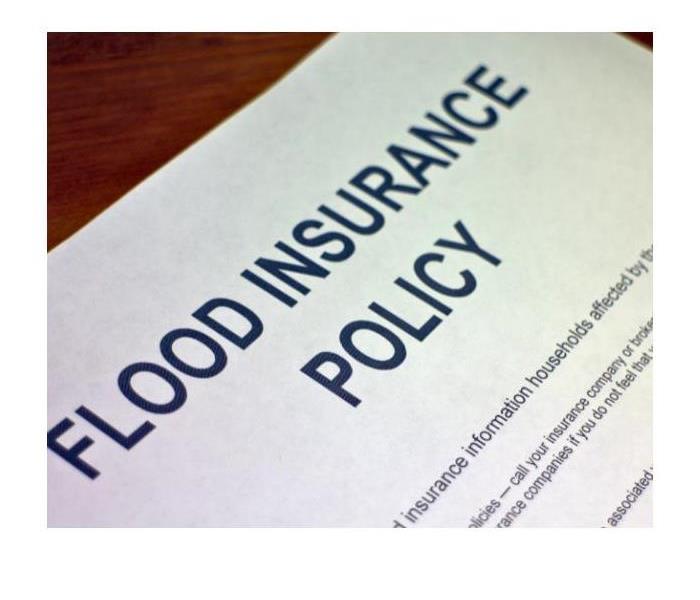7 Tips to Reduce Flooding Risks in Sandy, UT
5/17/2024 (Permalink)
Sandy, Utah, nestled at the base of the picturesque Wasatch Mountains, is a vibrant community that offers its residents a high quality of life. However, like many areas, Sandy is not immune to the threats posed by flooding. With its proximity to the Jordan River and the potential for heavy rainfall and snowmelt, flooding can pose significant risks to both property and lives in this area. Fortunately, there are proactive steps residents can take to mitigate these risks and protect their homes and families. In this blog, we'll explore seven tips to reduce flooding risks in Sandy, UT.
1. Stay Informed: Knowledge is Power
One of the most crucial steps in preparing for flooding is to stay informed about potential risks and warning signs. Sandy residents should familiarize themselves with the local floodplain maps, which identify areas prone to flooding. Additionally, signing up for emergency alerts and notifications from the city or county can provide early warnings of impending flood events. By staying informed, residents can take proactive measures to protect themselves and their property.
2. Invest in Flood Insurance
Many homeowners mistakenly believe that their standard homeowner's insurance policy will cover flood damage. However, most policies do not include flood coverage, leaving homeowners vulnerable to significant financial losses in the event of a flood. To protect against this risk, residents in flood-prone areas like Sandy should consider purchasing flood insurance through the National Flood Insurance Program (NFIP). While it may require an additional investment, the peace of mind and financial protection it offers are invaluable.
3. Maintain Proper Drainage
Effective drainage is key to preventing flooding, so it's essential for homeowners to keep their drainage systems well-maintained. This includes regularly cleaning gutters and downspouts to ensure they are free of debris, as clogged gutters can cause water to overflow and pool around the foundation of a home. Additionally, homeowners should inspect their property for any signs of poor drainage, such as standing water or erosion, and take steps to address these issues promptly. Proper grading and the installation of French drains or other drainage solutions can help redirect water away from vulnerable areas.
4. Install Sump Pumps
For homes with basements or crawl spaces, installing a sump pump can be an effective way to mitigate flood risks. Sump pumps are designed to remove excess water that accumulates in these areas, helping to prevent water damage and mold growth. It's essential to regularly test and maintain sump pumps to ensure they are functioning correctly when needed most. Additionally, homeowners may want to consider installing a backup sump pump or a generator to provide power in the event of an outage during a flood.
5. Elevate Utilities and Appliances
Flooding can wreak havoc on electrical systems, heating and cooling equipment, and other appliances located in basements or low-lying areas. To minimize damage, homeowners should elevate these utilities and appliances above the potential flood level. This may involve relocating electrical panels, HVAC systems, water heaters, and other essential equipment to higher floors or installing them on raised platforms. Taking these precautions can help prevent costly damage and ensure that essential services remain operational during and after a flood.
6. Waterproof Your Home
Waterproofing measures can provide an additional layer of protection against flooding and water intrusion. This may include sealing cracks in the foundation, applying waterproof coatings to basement walls, and installing a perimeter drainage system or interior waterproofing membrane. Homeowners should also consider investing in flood-resistant building materials, such as flood barriers for doors and windows, to prevent water from entering their homes. While these measures may require an upfront investment, they can ultimately save homeowners thousands of dollars in repair costs.
7. Practice Emergency Preparedness
Despite our best efforts to prevent flooding, emergencies can still occur. That's why it's essential for Sandy residents to have an emergency preparedness plan in place. This plan should include evacuation routes, emergency contacts, and a stocked emergency kit with essentials such as water, non-perishable food, first aid supplies, and flashlights. Additionally, families should discuss and practice their plan regularly, so everyone knows what to do in the event of a flood or other disaster.
Flooding poses a significant risk to homeowners in Sandy, UT, but by taking proactive measures, residents can reduce their vulnerability and protect their homes and families. From staying informed and investing in flood insurance to maintaining proper drainage and practicing emergency preparedness, there are many steps homeowners can take to mitigate flooding risks. By implementing these tips, Sandy residents can navigate nature's fury with confidence and resilience.




 24/7 Emergency Service
24/7 Emergency Service
